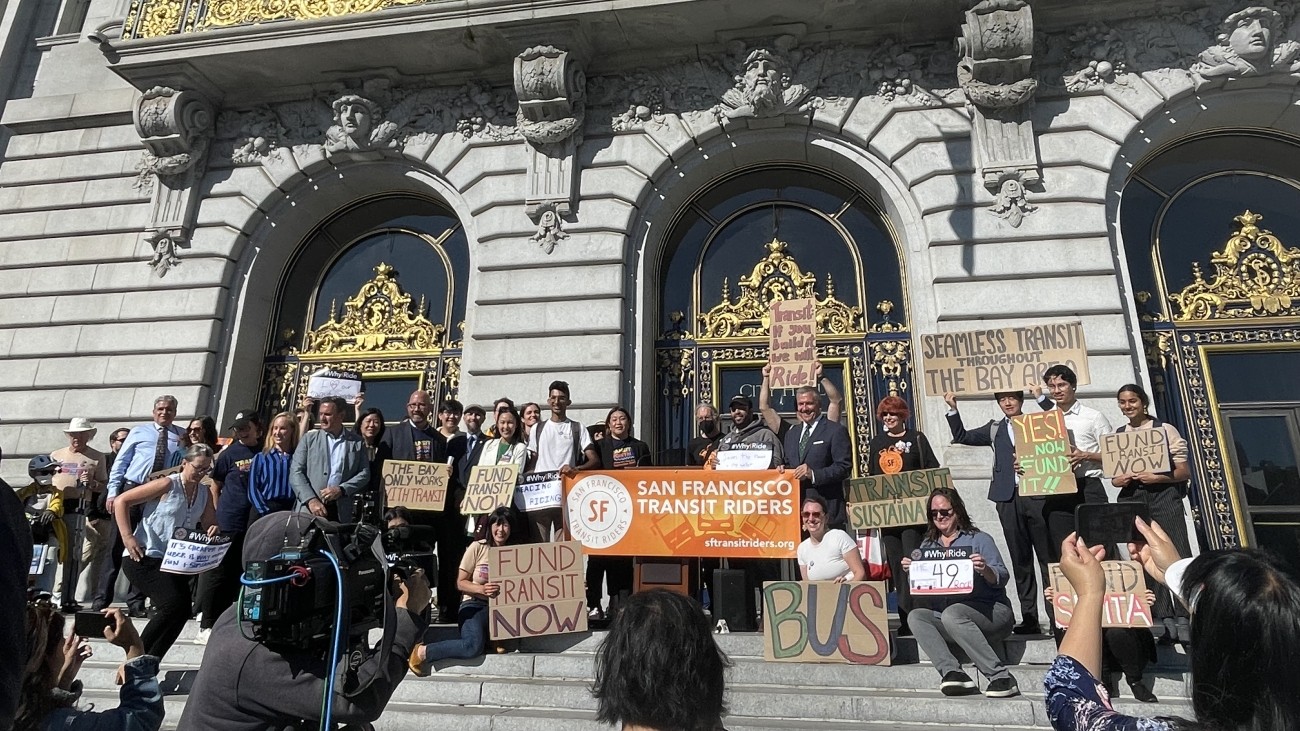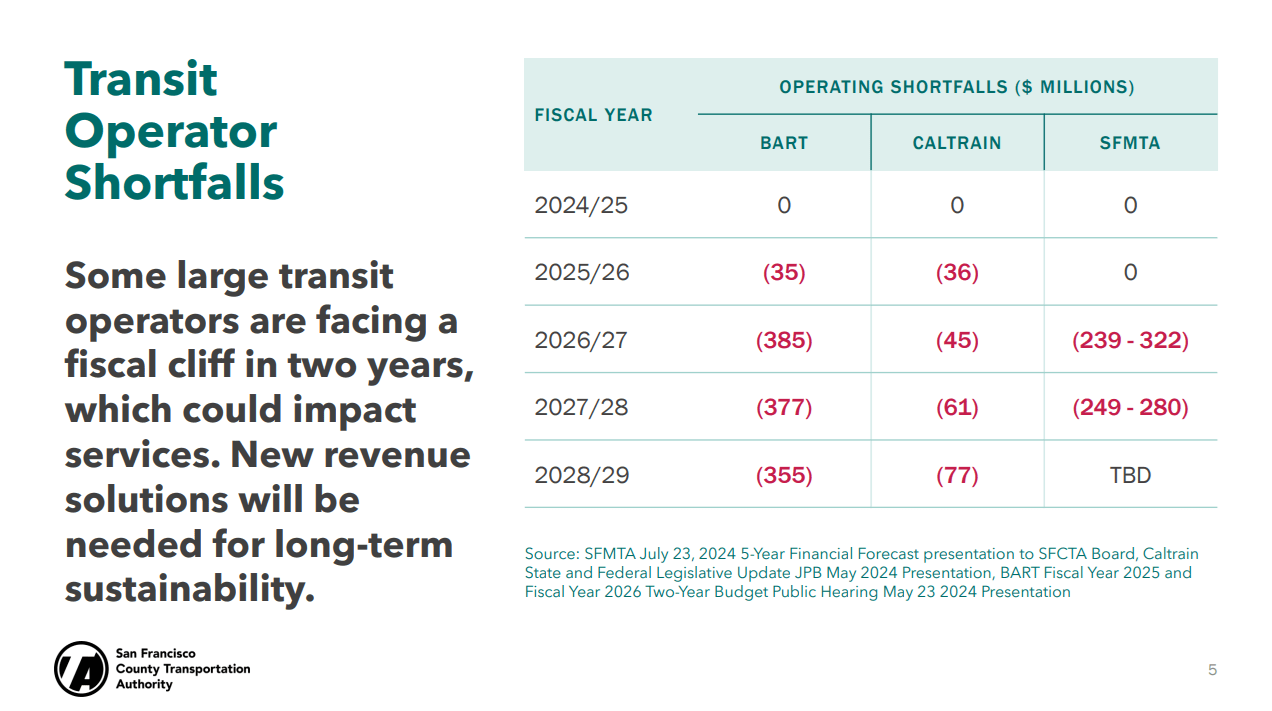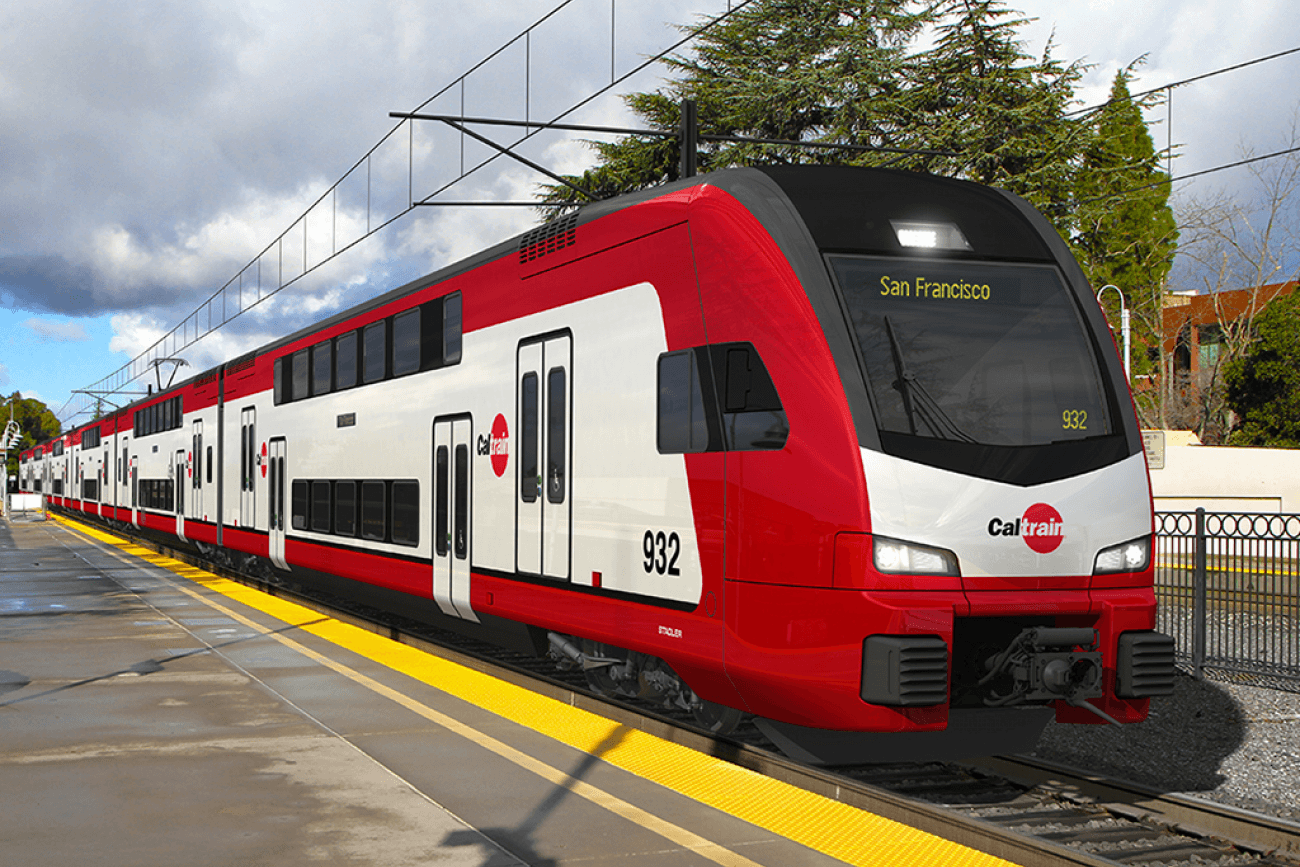
On September 5, we joined Transportation Authority Commissioners, State Senator Scott Wiener, Mayor London Breed, SFMTA, and San Francisco Transit Riders on the steps of City Hall to celebrate the start of Transit Month. The rally highlighted the efforts of transit systems to provide clean, reliable, and responsive service and called for the need to fund public transit.
Heather Thomson, CEO of the Institute for Transportation and Development Policy also attended the rally to present San Francisco with the Silver Certification Award for the Van Ness Bus Rapid Transit project. The award recognizes rapid transit projects that deliver world-class passenger experiences, significant economic benefits, and positive environmental impacts, and is the highest-level designation in the nation. The Transportation Authority helped fund the Van Ness BRT project with $38 million from our sales tax program.
Throughout Transit Month, Transportation Authority staff participated in various events:
Chief Deputy Director Maria Lombardo joined the San Francisco Transit Riders, SFMTA, California Air Resources Board, and Market Street Railway for a panel discussion called "Transit Forward: Moving San Francisco to a Transit-First Future." The panel discussed the history of San Francisco transit, how the city is innovating in and improving transportation, and environmental justice in transit, among other topics.
Thank you to everyone who joined our Transit Forward Panel, where we discussed our innovative goals for the future of transit in SF.
Thanks to our panelists @aeaken from @SFMTA_Muni, Maria Lombardo from @SFCTA, Rick Laubscher from @sfmsr, & Chanell Fletcher from @AirResources pic.twitter.com/QT5Qi0sMjc— SF Transit Riders (@SFTRU) September 24, 2024
We also joined Caltrain on September 21 to celebrate the start of electrified Caltrain service up and down the peninsula and at 4th and King Station in San Francisco. The new electric trains provide faster, more frequent service with amenities like free wifi, outlets at every seat, and accessible bathrooms. The electric trains also help lower greenhouse gas emissions, improve air quality, and relieve traffic congestion. Electrified service advances equity along the corridor by reducing noise and air pollution while increasing access for Equity Priority Communities and will support California’s future High Speed Rail. The Transportation Authority supported the $2.4 billion Caltrain Modernization Program (including Caltrain electrification) with over $40 million in transportation sales tax and other funds.
Congrats @caltrain for officially launching fully electric service this weekend! 🎉👏🏽
Thanks for bringing high-speed rail infrastructure & for paving the way for high-speed rail in the Bay Area. We are proud to be a funding partner for this project! #BuildHSR 🚄💨⚡️ pic.twitter.com/GwA7OSbRYp— CA High-Speed Rail 🚄💨 (@CaHSRA) September 23, 2024
Transit Recovery and Fiscal Cliff Update
Transit Month also highlights the need to fund agencies like SFMTA, BART, and Caltrain, which anticipate significant operating budget deficits starting in the next two years due to the pandemic’s lasting impacts on transit ridership and revenues.
During the September 24 Transportation Authority Board meeting, staff from the Transportation Authority, BART, SFMTA, and Caltrain presented updates on transit recovery and improvement efforts, and the fiscal cliff each agency is projecting (agenda item 9). Overall, transit ridership has been steadily increasing across the region but ridership recovery has varied across operators. BART and Caltrain are operating above 40% of pre-pandemic ridership, while SFMTA has seen ridership recovery reaching 76% this year, with some Muni lines exceeding pre-pandemic levels.

Work from home and other changes in travel behavior are the primary drivers behind these recovery trends and those changes have significantly impacted the budgets of many transit operators. Transit agencies are reimagining how to fund services with less reliance on traditional funding sources like fares and, for SFMTA, the City’s general fund, which has been impacted by the decline in commuters coming into San Francisco for work.
Transit agencies have received regional, state, and federal assistance for the last few years, however, those funds are expected to run out in the next one to two years.

New revenue sources are needed for long-term sustainability of transit across the region, as the Metropolitan Transportation Commission and transit operators explore creative solutions to respond to pandemic-induced changes in travel. Review presentations from BART, SFMTA, and Caltrain:
